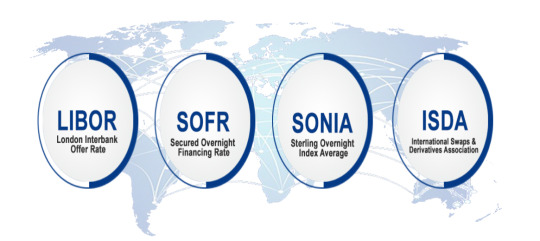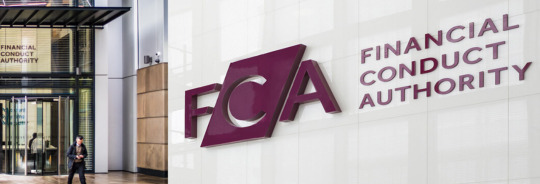#uk finance
Explore tagged Tumblr posts
Text
Making money on X (formerly known at twitter) through their Monetisation programme (an experiment)
Not many people are aware of this, but 𝕏 (formerly twitter) pays you a decent share of ad revenue, if your impressions (total views on all posts) exceeds 5 million in 3 months.
As an experiment, for 3 months, I moved all my social media activity to 𝕏. I used an account I've had for several years, but never really used. Mostly because I prefer Reddit, personally. But I wanted to try it.
So, instead of posting as I usually would on Reddit, Facebook, Instagram etc. I just moved all my internet activity to 𝕏.
The result was I exceeded 5mil impressions within 1.5months.
My account is @YourElfx, you can see I don't have a huge following yet, and mostly just posted as I usually would on other social media platforms. Connect with me there to find out more.
Final thoughts: Overall, I would not recommend doing this if you are not frequently active on social media. But if you are, I would advise considering it.
#monetization#Monetisation#Make money online#X#Twitter#Beermoney#Beermoney UK#UK finance#London#Notting hill#Kensington#Elon musk#Grimes
3 notes
·
View notes
Text
Fraud crackdowUK to Return Chagos Islands to Mauritius, Resolving Long-Standing Disputen might delay bank payments by 3 days
0 notes
Text
#online loans UK#short-term loans#borrowing tips#financial guidance#loan information#UK finance#credit insights#personal finance#online borrowing advice
0 notes
Text
Understanding the Challenges of Moving from LIBOR: Navigating the Tides

In the vast ocean of global finance, the London Interbank Offered Rate (LIBOR) stands out. It has long served as a crucial navigational beacon. Established in the mid-1980s, LIBOR quickly became the world’s most widely used benchmark for short-term interest rates. It’s similar to the financial world’s heartbeat. It underpins an estimated $350 trillion worth of financial contracts worldwide. These range from complex derivatives to simple home mortgages.
LIBOR represents the average interest rate for major global banks. They can borrow from one another in the international interbank market for short-term loans. LIBOR is published in five currencies: U.S. dollar, Euro, British pound, Japanese yen, and Swiss franc. It comes in seven different maturities ranging from overnight to one year. This provides a consistent, reliable gauge of the cost of unsecured borrowing in the London interbank market.
The importance of LIBOR in the financial system cannot be overstated. It serves as a reference rate for many financial products. These include syndicated loans, adjustable-rate mortgages, student loans, credit cards, and various types of derivatives. It’s the foundation of the global financial system. It influences borrowing costs throughout the economy. Moreover, it affects the finances of corporations, governments, and consumers alike.
However, LIBOR is the backbone of the financial world. Yet, it doesn’t come without its flaws. The financial world is preparing to navigate a future without it.
The Need for Transition from LIBOR

The journey towards a post-LIBOR world began with a series of unfortunate events. These events shook the financial world to its core. The LIBOR crisis erupted in 2012. It revealed that some banks had been manipulating the rate to their advantage. This led to a crisis of confidence in the benchmark. The scandal tarnished the reputation of LIBOR. It also highlighted its inherent vulnerabilities. One primary concern was that it was based on estimates and not actual transactions. This made it easier to manipulate.
The implications of the crisis were far-reaching. It led to billions of dollars in fines for the banks involved. Additionally, it casts a long shadow over the integrity of the global financial system. In response, it sparked a global conversation. The discussion centred around the need for a more robust and transparent alternative. This alternative needed to withstand the tests of market integrity and reliability.
How Everything Led to LIBOR’s End

In response to the crisis, regulatory bodies worldwide began pushing for a transition away from LIBOR. In the UK, the Financial Conduct Authority (FCA) made an announcement in 2017. It stated it would no longer ask or persuade banks to submit rates for LIBOR’s calculation after 2021. This announcement effectively set the clock ticking for the end of LIBOR.
The final nail in the coffin was in March 2021. The administrator of LIBOR, ICE Benchmark Administration, confirmed the termination dates for most LIBOR settings. It was announced that several LIBOR settings would cease after December 31, 2021. This included all the British pound, euro, Swiss franc, and Japanese yen settings. Additionally, the “one-week and two-month U.S. dollar settings” were included. The remaining U.S. dollar settings would cease immediately after June 30, 2023.
The announcement marked the beginning of the end for LIBOR. It set in motion a significant transition in global finance history. The transition from LIBOR is more than just a regulatory requirement. It’s a crucial step towards a stable and trustworthy financial system.
Challenges in the Transition from LIBOR

Navigating away from LIBOR is no small feat. The transition presents a multitude of challenges that financial institutions and market participants must overcome.
One of the most significant challenges is the complexity of replacing LIBOR in existing contracts, often referred to as “legacy contracts”. These contracts, which can extend beyond 2023, were drafted with LIBOR as the reference rate and often lack adequate provisions for the permanent removal of the benchmark. Modifying these contracts to replace LIBOR with a new rate is an enormous task, both legally and operationally, and raises the potential for legal disputes and market disruption.
The transition also involves the adoption of new risk-free rates (RFRs) that are fundamentally different from LIBOR. Unlike LIBOR, which reflects the credit risk of unsecured interbank lending, RFRs such as the Secured Overnight Financing Rate (SOFR) in the U.S. and the Sterling Overnight Index Average (SONIA) in the UK are nearly risk-free, as they are based on actual transaction data from secure lending markets. This shift from a credit-sensitive rate to a risk-free rate could have significant implications for the pricing and risk management of financial products.
Adding to the complexity is the absence of term structures in the new RFRs. While LIBOR is quoted for different maturities, most RFRs are overnight rates. The development of term rates based on RFRs is still in progress, and until these are widely available and accepted, the transition will remain a challenge.
The impact of the transition extends to various financial sectors and products. From securities, where LIBOR is deeply embedded, to syndicated loans and adjustable-rate mortgages that reference LIBOR, the transition will require significant adjustments. Market participants will need to adapt to new pricing mechanisms, risk management tools, and system changes, all while ensuring minimal disruption to financial markets.
Potential Solutions and Strategies for the Transition

Despite the challenges, the financial world is not walking without a light in this dark transition. Several solutions and strategies are being developed and implemented to navigate the shift from LIBOR. A key part of the solution lies in the development of alternative RFRs.
In the U.S., the Federal Reserve has endorsed the Secured Overnight Financing Rate (SOFR) as the replacement for U.S. dollar LIBOR. SOFR is based on actual transactions in the Treasury repurchase market, making it a more robust and reliable benchmark.
In the UK, the Bank of England has identified the Sterling Overnight Index Average (SONIA) as the preferred alternative to the sterling LIBOR.
These RFRs, along with others being developed around the world, are set to play a pivotal role in the post-LIBOR era.
Another crucial strategy for the transition is the incorporation of robust fallback language in financial contracts. Fallback provisions outline the steps to be taken and the replacement rate to be used if LIBOR ceases to exist. The International Swaps and Derivatives Association (ISDA) has developed a standard fallback protocol, which many market participants have agreed to, providing a clear path for the transition in derivative contracts.
Technology and data also hold the key to managing the transition effectively. Financial institutions are leveraging technology solutions to identify and analyze LIBOR exposure in their contract portfolios. Advanced analytics, fintech solutions and AI are being used to extract and review contractual terms at scale, enabling institutions to manage the transition in a more efficient and risk-controlled manner.
The transition from LIBOR is undoubtedly a complex and challenging process. However, with the right strategies and solutions in place, the financial world can successfully navigate the shift and emerge with a more transparent and robust benchmarking system.
The Impact of the Transition on Global Financial Markets

The ripples of the transition from LIBOR are being felt across global financial markets. This is leading to significant changes and potential disruptions.
One of the most profound impacts is the change in market risk profiles. The shift from LIBOR, a credit-sensitive rate, to nearly risk-free rates changes the dynamics of interest rate risk.
Financial institutions will need to review their risk management strategies. This is because the new rates do not reflect bank credit risk. These rates could also behave differently from LIBOR under various market conditions.
The transition also has a significant effect on interest-rate products and securities. LIBOR is deeply embedded in these markets. Its replacement will require adjustments in pricing, valuation, and risk management of these products. For instance, the shift to SOFR in the U.S. will have effects. It could affect the pricing of interest rate swaps. This is because SOFR tends to be lower than LIBOR due to its nearly risk-free nature.
Moreover, the transition carries the potential for market disruption and legal disputes. The modification of legacy contracts to replace LIBOR could be problematic. It could lead to disagreements over the choice of replacement rate. The adjustment spread might also be a point of contention. This could potentially result in lawsuits. There’s also the risk of market fragmentation. Different jurisdictions or market segments might choose different replacement rates.
The Role of Regulatory Bodies and Financial Institutions in the Transition
Read the full article at: https://dsb.edu.in/understanding-the-challenges-of-moving-from-libor-navigating-the-tides/?utm_source=Tumblr&utm_medium=Tumblr&utm_campaign=Tumblr+LIBOR
#libor#benchmark#uk finance#loans#tech#fintech#india#blockchain#jobs#banking#chatgpt#education#gpt 4#ai#google#investment#altcoin#crypto#defi
0 notes
Text
Demystifying Credit Checks: How They Impact Loan Comparison
When comparing loan options, understanding the role of credit checks is crucial. Lenders often perform credit checks to assess borrowers' creditworthiness and determine the terms of the loan. These credit checks can have a significant impact on your loan comparison process. In this blog post, we will demystify credit checks, explain how they influence loan comparison, and provide insights into managing your credit to secure the best loan offers.
Understanding Credit Checks : Credit checks involve lenders accessing your credit report from credit bureaus to evaluate your credit history, credit score, and financial behavior. They help lenders assess the risk of lending to you and determine the terms, interest rates, and loan amounts they are willing to offer. There are two types of credit checks: soft inquiries (non-impactful) and hard inquiries (impactful). Soft inquiries are used for informational purposes, while hard inquiries are recorded on your credit report and can affect your credit score temporarily.
Impact on Loan Comparison: Credit checks play a vital role in loan comparison. They directly influence the interest rates, loan terms, and loan amounts offered by lenders. Lenders typically offer better terms and lower interest rates to borrowers with good credit scores and a positive credit history. When comparing loans, borrowers with higher credit scores are more likely to qualify for lower interest rates and favorable terms, saving money in the long run. On the other hand, borrowers with lower credit scores may face higher interest rates or stricter loan terms. It's important to consider how credit checks and your credit score will impact the affordability and overall cost of borrowing when comparing loan options.
Managing Your Credit: To improve your chances of securing better loan offers, it's important to manage your credit effectively. Start by reviewing your credit report for any inaccuracies or errors. Pay your bills on time, reduce your credit card balances, and avoid taking on excessive debt. Avoid making multiple loan applications within a short period, as each application can result in a hard inquiry and potentially lower your credit score. Instead, focus on targeted applications based on thorough research and comparison. Additionally, consider using credit monitoring services to stay updated on your credit status and make improvements where necessary.
Strategies for Loan Comparison: When comparing loans, be mindful of lenders who offer personalized interest rates based on creditworthiness. Some lenders may pre-qualify you or provide rate estimates without impacting your credit score. Utilize loan comparison tools or approach lenders for pre-qualification to get a better understanding of the rates and terms available to you. Compare loans with similar terms and request personalized loan quotes from multiple lenders to ensure accurate comparisons. Pay attention not only to interest rates but also to the APR, repayment terms, fees, and additional features offered by each lender.
Credit checks have a significant impact on loan comparison. Understanding how credit checks work, their impact on loan terms, and managing your credit effectively can help you secure better loan offers. Maintain a good credit score by managing your credit responsibly and reviewing your credit report regularly. When comparing loans, consider lenders that offer personalized interest rates based on creditworthiness and utilize loan comparison tools for accurate comparisons. By demystifying credit checks and incorporating credit management strategies, you can make informed decisions and secure the most favorable loan options.
#finance#payday loans#bad credit loans#loanrepayment#financial#business loan#credit score#credit check services#personal loans#credit#loan#united kingdom#england#britain#london#uk news#uk finance#apr#annual percentage rate#compare loans#banking#banks#bank
1 note
·
View note
Link
Recently, the ICC United Kingdom has reported launching a new drive to enhance the UK finance industry against the adverse effects of duplicate financing fraud.
The Centre for Digital Trade and Innovation (C4DTI)operated initiative will use ICC United Kingdom’s convening abilities to convey this leading project under the C4DTI’s “Shutting Fraudsters out of Trade” workstream in association with MonetaGo.
Duplicate Financing is defined as a fraudulent act where fraudsters avail multiple funds for the same transaction several times. In the present scenario, a fraudster can visit various banks and get the same transaction financed, without letting the other banks know or having them cross-check with the same.
Guidelines related to confidentiality inhibit the banks from disclosing or sharing information on deals they have financed with other banks, creating a hopeless situation that fraudsters take advantage of to get funds for the same transaction multiple times.
Read more: https://www.emeriobanque.com/news/icc-uk-introduces-initiative-to-cope-duplicate-finance
#Digital Trade and Innovation#UK finance#ICC United Kingdom#financial services globally#global trade finance
0 notes
Text







🕰Big Ben + Westminster: I didn't go inside Big Ben, but Westminster is worth visiting. Tickets can be booked every Saturday, and there will be a voice guide (Chinese version). It is a magnificent building. You can also see where their members of parliament hold daily meetings. It is the place where the popular video "ORDER!" took place. It is very interesting. 🎡London Eye: When I went there, it happened to be a rare sunny day, so I bought a ticket to go up. The weather was good and the scenery below was also very beautiful. A cable car can accommodate many people. It is still scary at high places, especially for people who are afraid of heights.
#travel#life#life series#economy#finance#gourmet food#trade#europe#austria#vienna#london#chicago#england#manchester#architecture photography#france#buckingham palace#westminster abbey#uk#british museum#pompeii#history#ireland
55 notes
·
View notes
Text

Not surprised at all.
10 notes
·
View notes
Text










Death Dorm (The Dorm That Dripped Blood, 1982)
"I'm not gonna hurt you! I love you! I'm not gonna hurt you like all the others. The others - the others! Do you wanna see the others, huh?"
#pranks#the dorm that dripped blood#death dorm#1982#video nasty#american cinema#slasher film#jeffrey obrow#stephen carpenter#stacey giachino#laurie lapinsky#stephen sachs#david snow#pamela holland#dennis ely#woody roll#daphne zuniga#jake jones#robert fredrickson#chandre#chris morrill#billy criswell#sources vary on what the 'true' title of this film is: the print i saw carried the Death Dorm title‚ it opened in the UK as Pranks (and#ended up on the DPP nasties list) but seems to be most commonly known by the '...Dripped Blood' title. it's perhaps indicative of what a#messy production this seems to have been; 3 writers‚ 2 directors‚ beginning as a student film and financed mostly by contributions from the#crew's friends and families. i can't help but admire that kind of indie chutzpah‚ even when the end result isn't particularly original#director‚ writer‚ producer Obrow figured that most horror audiences were really in it only for the gore‚ so that became a focus of this#campus slasher‚ leading to some over the top splattery kills which sit a little oddly with the slower‚ quieter vibe that makes up a large#part of the film. hardly essential viewing‚ but a decent enough b list slasher and an impressive bit of DIY filmmaking#and the final half hour perks it all up quite considerably (was not expecting the downbeat ending)
12 notes
·
View notes
Text
I think I have enough money to see my partner again next year!!!!!!!!
#This is an entirely personal post but WOWOWOWOOWOWOWOW#for context: I live in the UK! They live in the US! That's a long and expensive trip!#but I've been saving literally ANY money I earn since July and just hit the minimum requirement for a flight???#We're hoping to have time over summer so. I have a while still to save. But thank fucking god.#Wider context: yesterday was the christmas market! I had a stall!!!#I MADE ALMOST £300 AT SAID STALL#THAT IS INSANE#I don't think anyone on here knows me irl other than like two people who I know and I am looking at you if you are reading this#A or W#but thank you to the customers I had for. Their support. The finances. The ability to see my favourite person#AAAAAAAA
11 notes
·
View notes
Text
If anybody ever wants to know anything about the state of British politics, just show them this song and they'll instantly get it
youtube
(It's genuinely really good - the song and the satire, even if you don't give a shit about British politics I highly recommend it)
#''he's not an adulterer hes just a shagger'' ''deporting them was wrong we should've sent them to rwanda''#and of course#'the tories can't be antisemitic when it's recognised they've sent like half a billion pounds to finance israel's genoci- DEFENCE OPERATION'#britain#uk#british politics#british memes#fuck the tories#Youtube
6 notes
·
View notes
Text
If we owe George Osborne anything, it is irrefutable empirical evidence that using the analogy of a credit card for a nation’s budget (along with inane “belt tightening” and “fixing the roof when it is sunny” metaphors) is a terrible basis for prudent fiscal policy. It is true that the Tories will leave scorched earth behind for the next government, with a budget dripping in red ink and a pitiful level of investment in the technologies and services the UK needs to escape a long-term slump. But this is precisely the reason why Labour must reject the austerian urges that, inevitably, spring from the credit card analogy.
[...]
The state’s budget is nothing like a credit card. As chancellor of the exchequer, your (tax) income is highly dependent on your (public) spending. Limit your spending and you have limited your income too. This is why the more Osborne slashed public spending in the 2010s, the more money he needed to borrow. By adopting the “maxed credit card” narrative, Reeves endorsed Osborne’s flawed logic and, indirectly, absolved the Tories for the wanton damage they have inflicted on a generation of Britons. Austerity, and the credit card analogy that provides its thin veneer of logic, is not just bad for workers and people in desperate need of state support during tough times; it also depresses investment. By hastening the stagnation of a society’s aggregate income, it signals to businesses that they would be mad to put money into building up the capacity to produce the output that society is too impecunious to buy. That’s how austerity undermined investment in Britain and that’s how it will annul Labour’s ambition to draw in private green investments, now that Reeves has ditched her modest green public investment plan, replacing it with wishful thinking that the private sector will, magically, make up the difference.
12 notes
·
View notes
Text

Day 2023, 6 January 2024
#London#Canary Wharf#citi#citigrouo#skyscraper#canada square#architecture#offices#finance#financial#England#UK
17 notes
·
View notes
Text
7 reasons to choose a non-sector-specific lender for your business loan

At Rivers we are quite unusual because we are a non-sector-specific lender. While lots of other lenders limit the industries and assets they're prepared to finance, and others proactively exclude certain sectors considered high risk, such as hospitality, constriction, air conditioning, businesses focused on cigarettes or vapes, and gambling based organisations, we don’t.
As an independently run SME, Rivers was established to meet the needs of other business owners and their enterprises, understanding that the hard facts of a business are just one part of the story. As a result, we chose to be non-sector-specific, and in broad terms will consider any business for a business loan, as long as they meet our minimum lending criteria.
Read full blog - https://www.riversfunding.com/news/7-reasons-to-choose-a-non-sector-specific-lender-for-your-business-loan
#cash flow loans#affordable business loans#best bank for business loans#best business loan rates uk#best small business loan#business borrowing#business lending uk#business loan funding#business loans for new business uk#business loans for same day funding#Business finance#Business growth funding#Business loan calculator uk#Business finance loans#Business loan finance#Business loans#Cash flow solutions for smes#Medium term Business loans#Short term Business loans#Small Business loans#Unsecured Business loans#Vat funding for Businesses#Working capital loans
2 notes
·
View notes
Text
wow 24 hours back home and I'm already almost fully mentally healthy 😭😭 girls I didnt realize how detrimental my living conditions were to my already miserable psyche ........
#who would've known moving abroad to the most gray country on earth right when the days#are getting shorter and shorter and having lectures once a week and the love of your life breaking up with you-#and having to fight for ur life to socialise and build friendships will make you go crazy lollll????#I do love my friends in the uk but yeah I'm realising it was a LOT.... I'm so glad I'm spending the holidays home#also not having to worry about food and cooking and finances that shit made me want to kms
4 notes
·
View notes
Text
“Things come apart so easily when they have been held together with lies." - Dorothy Allison
“Five ways to fix the £40bn hole in UK’s public finances.” (FT: 18/10/22)
“Fast-rising borrowing costs putting UK public finances at greater risk, warns OBR.” (Guardian: 13/07/23)
“Britain’s debt timebomb is about to explode – and politicians are too timid to defuse it.” (The Telegraph: 09/12/23)
“The Institute for Fiscal Studies (IFS) suggested some government departments could see cuts of between £10bn and £20bn – something Labour was reluctant to engage with during the election campaign." (BBC News: 27/07/24)
Given that the above news outlets – along with many others – have been telling us about the hole in UK public sector finances for at least 2 years why does it seem to have come as a great shock to Rachel Reeves?
“Chancellor Rachel Reeves said there was a £22 billion black hole in the public finances as she accused the Tories of covering up the scale of the problems.” (Northwich & Winsford Guardian: 29/07/24)
Either Rachel Reeves does not read official financial reports (in which case why is she Chancellor of the Exchequer) - or she is simply lying. I suspect the latter. This is what fullfact.org had to say:
“The IFS says many of the challenges Labour outlined this week were “entirely predictable”, and during the election campaign the think tank said that a new government would likely see a shortfall of £10-£20 billion by 2028/29.” (30/07/24)
How disappointing that Starmer’s Labour Government has the same relationship with the truth as the Tories - utter distain!
5 notes
·
View notes